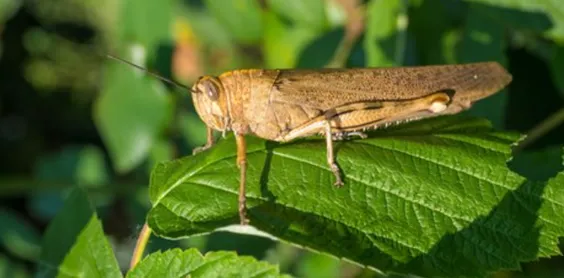Potato tuber moth (Phthorimaea operculella) is an insect species from the Gelechiidae family, known for the damage it causes to potatoes. This species overwinters among plant residues in the fields. By the end of March or early April, the adults emerge and begin laying their eggs. Eggs are typically laid on the undersides of leaves, or on flower buds.
Potato tuber moth is a species that causes significant economic losses, and it holds great importance in our country, where potato exports are high. Therefore, it is crucial to combat this species effectively. Successful control measures can positively impact the national economy. There are effective methods available to combat this species, which vary from biological to cultural and biotechnical approaches.
Combatting the Potato Tuber Moth
The potato tuber moth is an insect species that causes serious losses in potato production and must be controlled. The damage is caused by its larvae, which overwinter in plant residues and emerge as adults by late March or early April.
This insect species is most commonly found in regions such as the Mediterranean, Africa, and South America, where the damage it causes is considerable. The life cycle of the moth varies depending on temperature.
The moth is small in size, with a gray-brown color, and is most active at night. Adult moths lay their eggs on the undersides of plant leaves and potato tubers.
Once the larvae hatch, they feed on the leaves, stems, and tubers of potatoes, causing significant damage that severely reduces product quality and leads to economic losses.
The moth’s larvae also create galleries in the leaves and stems of other crops, allowing them to survive and multiply in storage areas.
The question “How to eradicate the potato tuber moth?” is frequently asked. It is essential to effectively combat this species, which causes significant losses to the national economy.
Here are the methods and their characteristics used to combat this species:
- Harvested potatoes should not be left on the field edges but should be transported to storage.
- This species cannot survive below 10°C, so storage temperatures should be maintained accordingly.
- Attention should be paid to storage cleanliness and the application of treatments.
It involves the use of pesticides, but care should be taken when using chemicals.
This control method includes the use of traps, with pheromone traps being one of the most effective in combating this species.

What is a Pheromone Trap and What are Its Features?
A pheromone trap is a type of trap used to reduce pest populations and prevent their spread.
The pheromone trap mimics the pheromone chemicals secreted by female moths and causes the destruction of male moths by luring them into the trap. These traps contain a sticky surface or water-filled containers, and pheromone capsules are placed in these areas. The moth, detecting the pheromone, is drawn to the trap, sticks to the adhesive surfaces, and dies.
Water-filled containers are designed to cause the moths to drown after being attracted to the trap. Pheromone traps are often preferred because they reduce chemical usage, thereby minimizing the damage caused by the potato tuber moth and helping monitor and control the population.
The features of pheromone traps are as follows:
- They are designed to target a specific species, preventing harm to beneficial organisms.
- Easy to set up and cost-effective.
- Preferred due to limiting chemical use, allowing pest populations to be controlled without the need for chemicals.
- They do not harm human health or the environment due to reduced chemical use.

What Should Be Considered When Preparing Pheromone Traps?
The setup of these traps is quite simple. They should be placed in areas where moth populations are dense. Regular checks and maintenance are necessary. The pheromone capsules placed inside the traps should also be checked and replaced at regular intervals to ensure long-term effectiveness.
When using pheromone traps, they should be integrated with other biological and cultural methods. By using this trap method in combating moth pests, chemical use is reduced, and population monitoring and control are achieved. These features make it one of the most frequently preferred methods.
Other trap methods used alongside pheromone traps include light traps and sticky traps.
For information on the damages caused by the potato tuber moth and its control methods, you can contact Kapar Organic.
Some frequently asked questions about this pest species include:
There are effective methods for combating this pest species; these include cultural, biological, and biotechnical methods.
The larvae on potato leaves develop into adult moths.
The larvae and moths of the potato pest usually eat the potato leaves from the outside in, causing holes in the potatoes.
